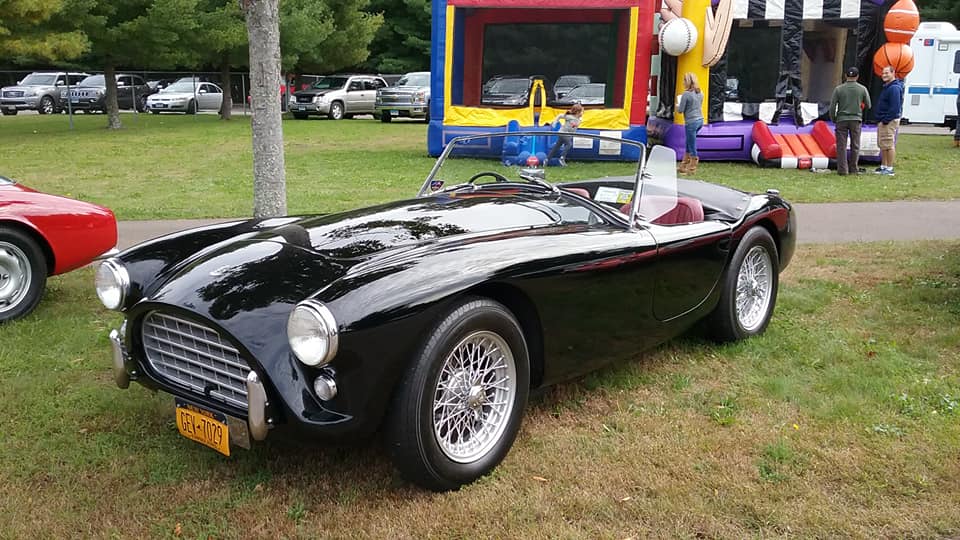Car: AC Ace-Bristol
Year: 1960
What makes it special: The AC Ace was produced by AC Cars of Thames Ditton, England, from 1953 to 1963. AC came back to the market after the Second World War with the 2-Litre range of cars in 1947, but it was with the Ace sports car of 1953 that the company really made its reputation in the post war years. Casting around for a replacement for the ageing 2-Litre, AC took up a design by John Tojeiro that used a light ladder type tubular frame, all independent transverse leaf spring suspension, and an open two seater alloy body made using English wheeling machines.
What made it famous: Early cars used AC’s elderly 100 bhp two-litre overhead cam straight-six engine, which, according to a 1954 road test by Motor magazine, gave a top speed of 103 mph and 0–60 mph in 11.4 seconds and a fuel consumption of 25.2 miles per gallon. From 1956, there was the option of Bristol Cars’ two-litre 120 bhp straight-six with 3 downdraught carburetors and slick four-speed gearbox. Top speed improved to 116 mph with 0–60 mph in the nine second bracket. Overdrive was available from 1956 and front disc brakes were an option from 1957, although they were later standardized. With the engine set well back in the chassis, the Ace handled well and was successful in competition.
Why I would want one: Fans may recognize the AC Ace-Bristol as the basis of the famed AC-Cobra, which the British sports car was outfitted with American V8’s, and produced by the late Carroll Shelby.
Fun fact: When Bristol ceased building their 6-cylinder engine in 1961, AC’s owner, Charles Hurlock, was approached by Carroll Shelby to use a Ford V8 in the Ace chassis, producing the AC Cobra in 1962. Production of the Ace ended the same year. The AC Cobra came in small block and later big block configurations. It was Ford’s 289 that powered the winning car in the GT class at Le Mans in June 1964. At the time, the AC Cobra 427 was the fastest “production” car in the world.
Powered by CCS Insurance

